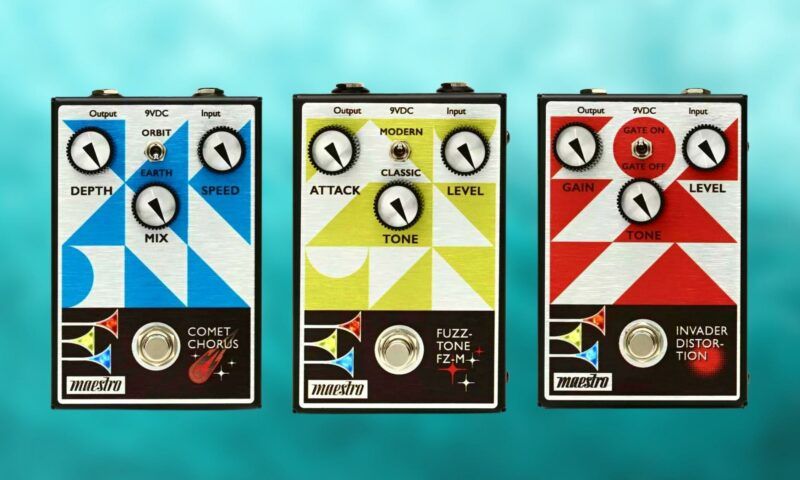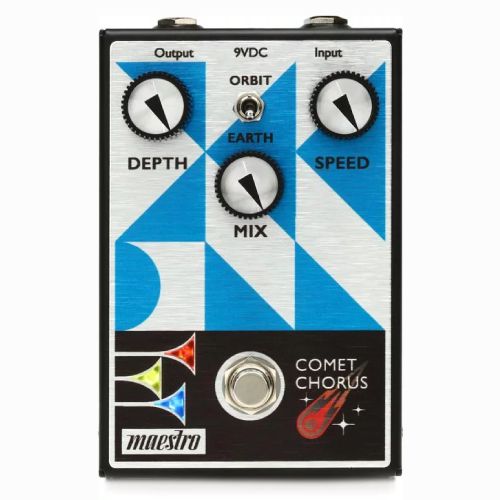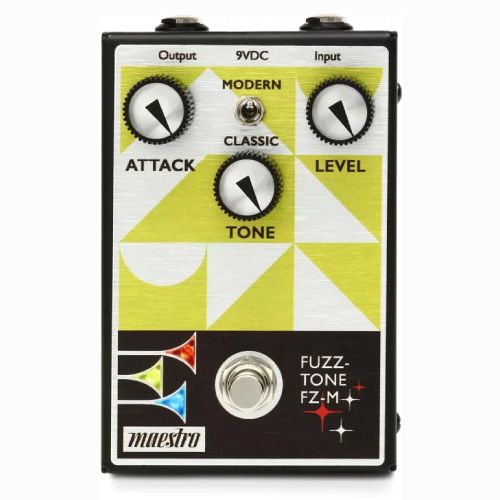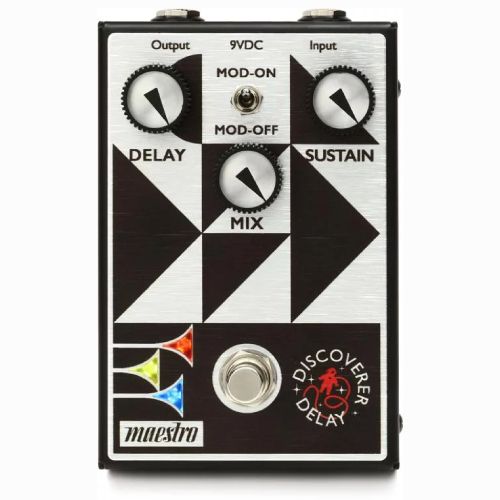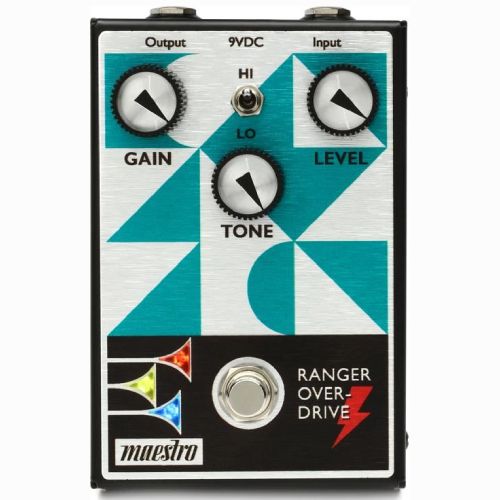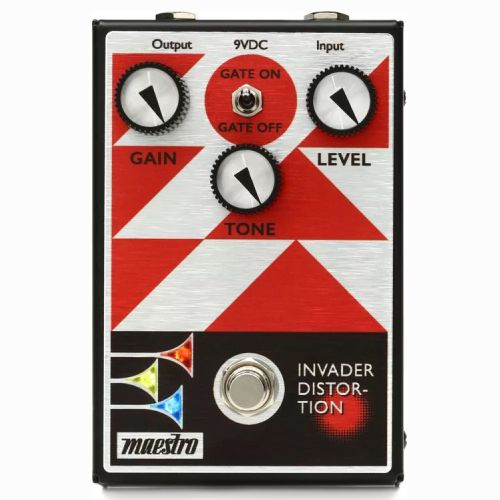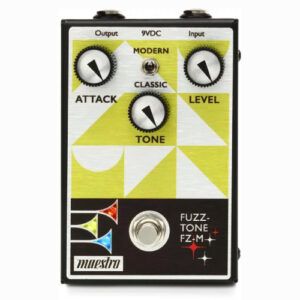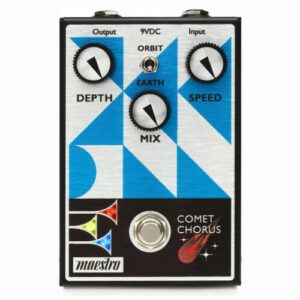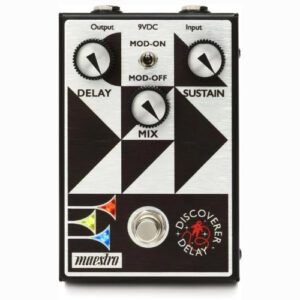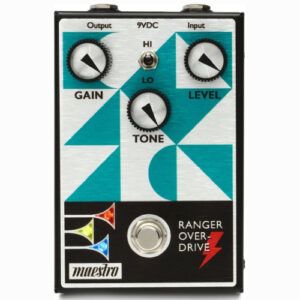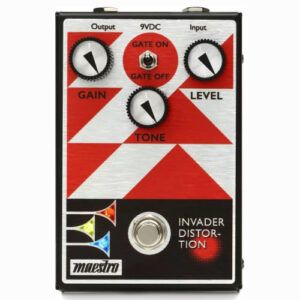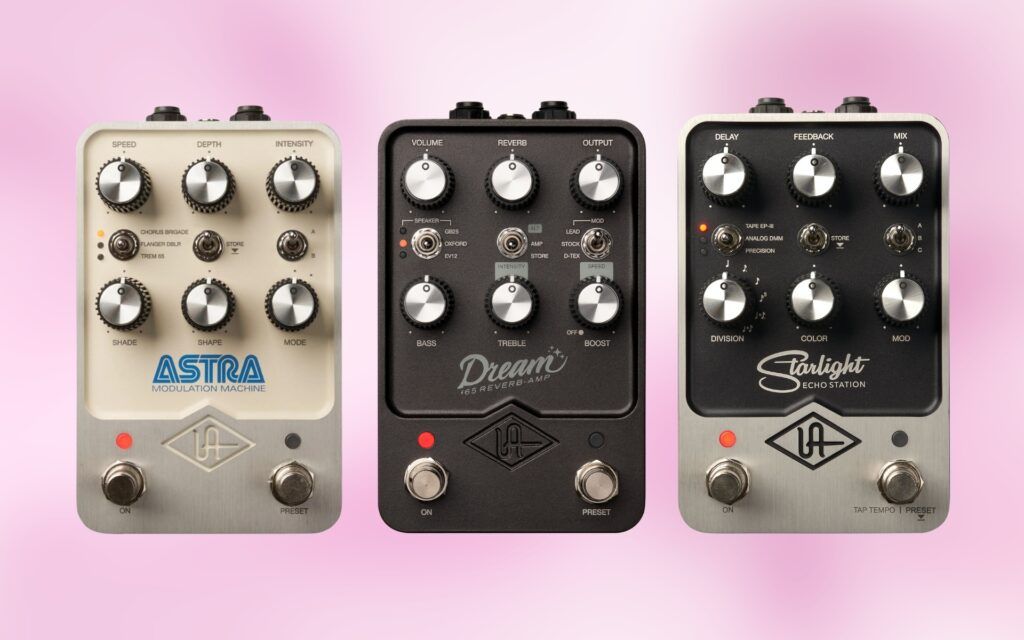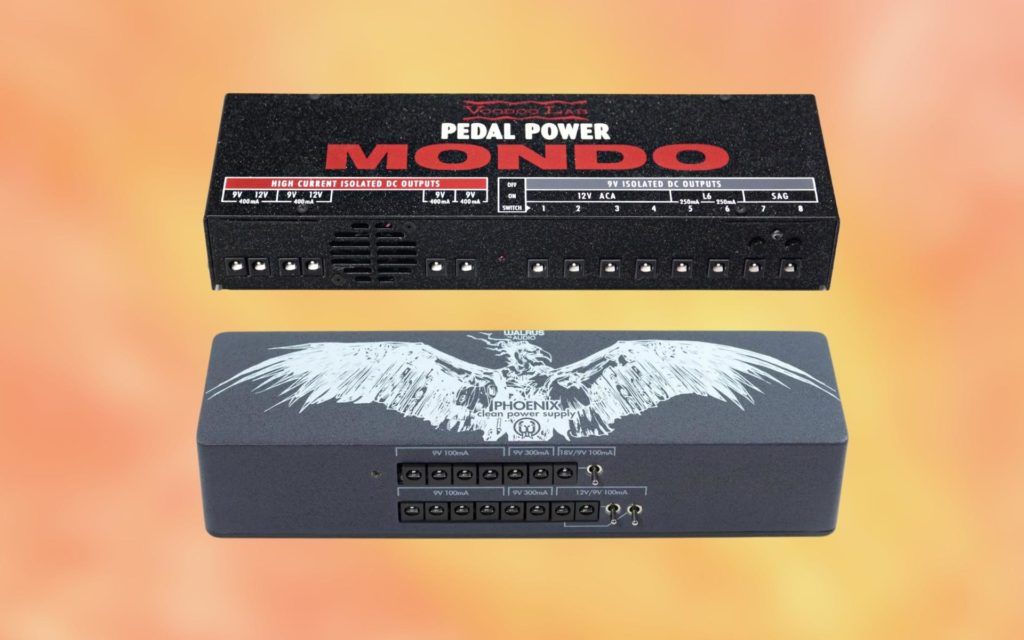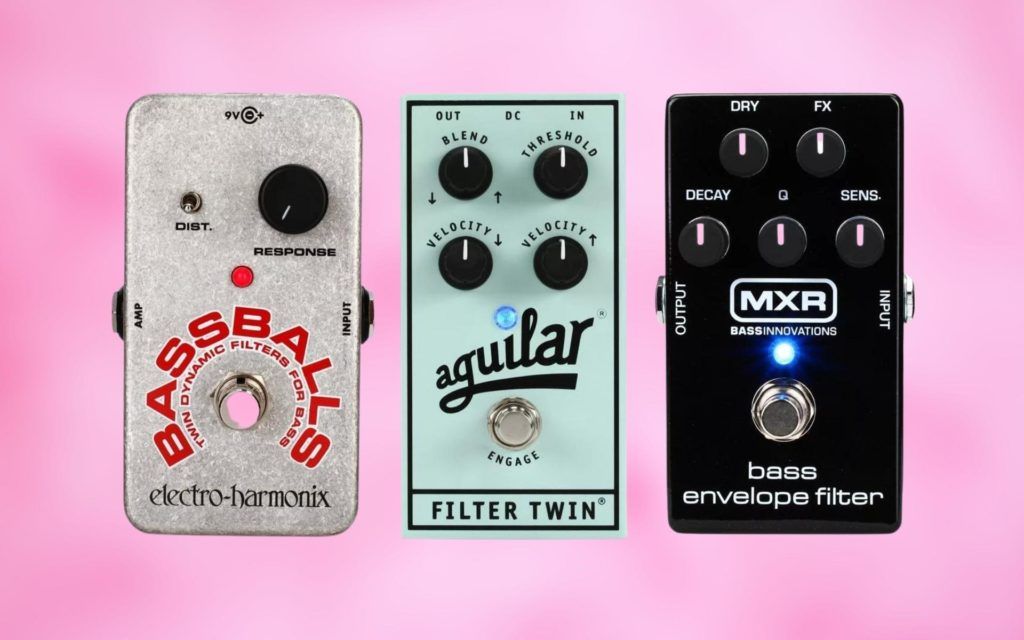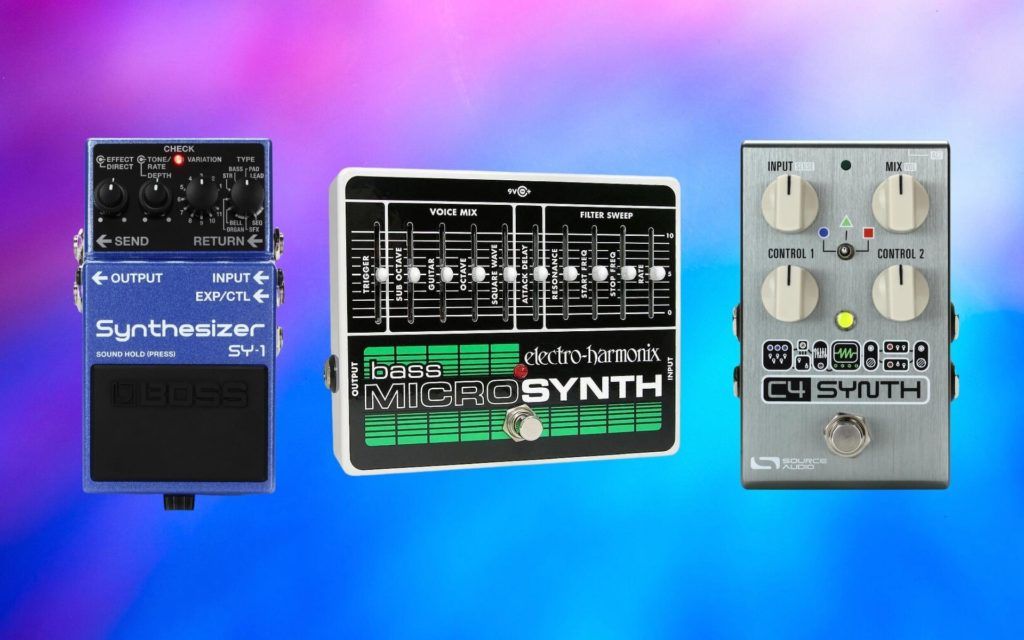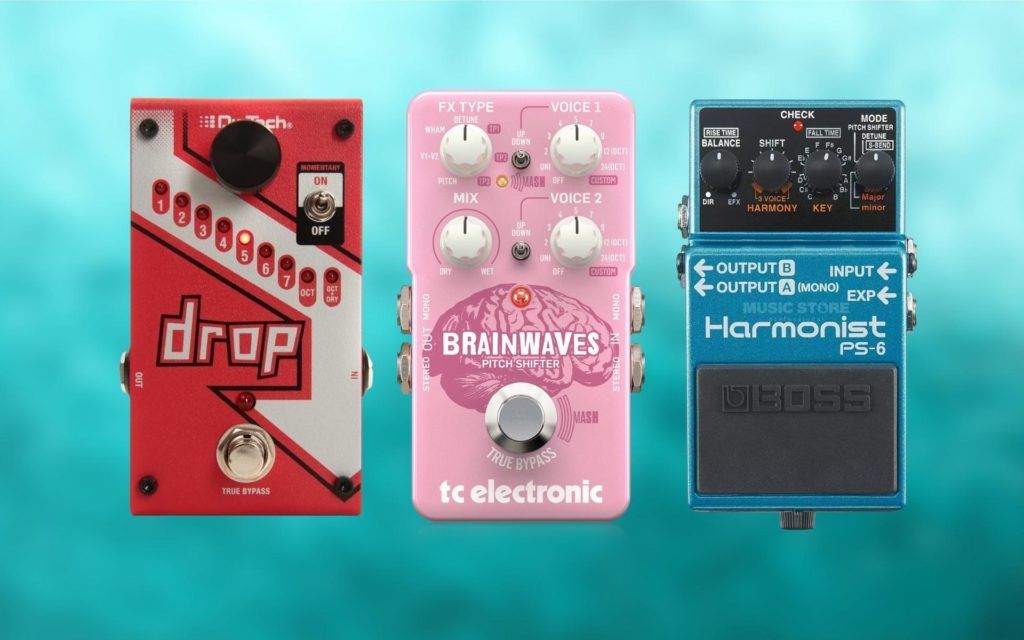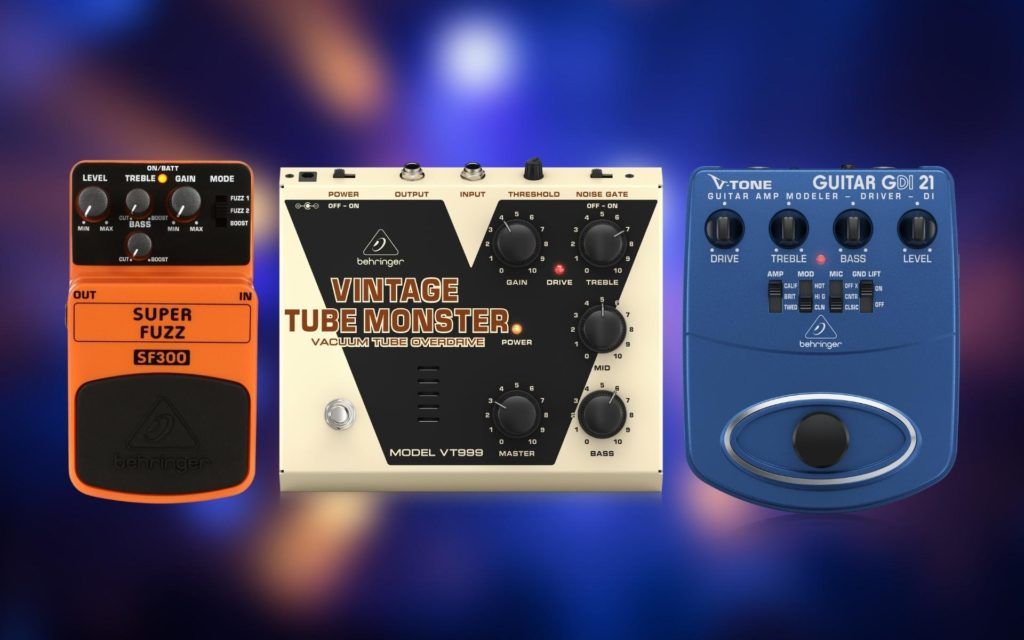We review products independently and our recommendations are genuine. If you purchase through links on our site, we may earn an affiliate commission. Learn More
A pioneer of guitar effects pedals, Maestro has been used by some of the most iconic guitarists in history. We’ve reviewed the best offerings from their new range.
When it was announced that Gibson would revive the Maestro brand and release a new selection of pedals, there was a lot of excitement amongst the guitar pedal community.
Although some of the younger generations may have never encountered a Maestro device, the brand is credited as the world’s first-ever guitar effects pedal manufacturer.
Used by guitarists like Keith Richards of the Rolling Stones and Robby Krieger of the Doors in the 1960s, Maestro stompboxes faded into the background for several decades.
Our comprehensive guide will present the best offerings from the new Maestro Original Collection, which adds modern improvements to the vintage designs.
What are the Best Maestro Pedals?
How We Tested
To ensure that we tested these Maestro pedals accurately and fairly, we monitored the effects through various amplifiers and paired them with multiple types of guitars.
We then altered the onboard controls to see whether they had an overall positive impact on the way the pedals functioned and sounded. Finally, we tested the pedals for any signal or noise issues.
Maestro Pedals Reviews
Maestro Fuzz-Tone FZ-M Fuzz Pedal
Maestro Fuzz-Tone FZ-M Fuzz Pedal Review
Based on the classic original model from the early 1960s, the Maestro Fuzz-Tone FZ-M Fuzz Pedal is an excellent addition to any rock guitarist’s pedalboard. This pedal has all of the attributes that made the original so popular, with some modern updates.
The legacy of this Maestro pedal is well documented. Some of the most iconic guitarists of the 1960s used it to add fuzz to their tone, including The Doors’ Robbie Krieger and, of course, The Rolling Stones’ Keith Richards.
The Fuzz-Tone FZ-M is essentially a two-in-one effects pedal. Its two-way toggle switch allows you to choose between a pair of presets, one of which produces the “classic” Maestro fuzz effect and the other, which produces a more modern-sounding fuzz effect.
The three rotary controls included on this Maestro pedal can be used to alter the attack, level, and tone of the fuzz effect.
All-analog circuitry gives this fuzz pedal an authentic, vintage sound that is ready-made rock classic rock n’ roll riffs and solos. By tweaking the various controls, you can also dial in the saturation and create more of an overdrive effect.
Features:
- Based on the 1962 original fuzz
- All-analog design
- “Modern” and “Classic” modes
Pros
- Produces authentic '60s-style fuzz
- Gives you control over your dynamics
- Preserves the clarity of your guitar signal
Cons
- Works best with a compressor pedal
Maestro Comet Chorus Pedal
Maestro Comet Chorus Pedal Review
The Comet Chorus is the flagship modulation pedal from Maestro’s Original Collection. It combines a lush, warbly chorus with a rotary speaker effect, both of which sound great through a tube amp.
To switch between the chorus and rotary effects, you use the 2-way toggle switch. This activates one of two presets – “Orbit” and “Earth.” The former preset makes your guitar pulsate noticeably, while the latter is more of a subtle variety of modulation.
Maestro has installed true bypass switching to avoid the dreaded “tone suck” from occurring when the pedal is not in use. The Comet pedal also benefits from the entirely analog circuitry.
A classic BDD-style pedal, the Maestro Comet Chorus Pedal is capable of completely transforming your guitar tone. Alternatively, you can use it to add a little color and modulation without being overly intense.
Maestro has installed an internal trim to ensure that the level of the rotary speaker effect is kept optimal.
Features:
- Three rotary knob controls
- True bypass switching
- “Orbit” and “Earth” modes
Pros
- Warm-sounding chorus and rotary effect
- Ideal for psychedelic rock guitar
- Also compatible with bass and keys
Cons
- Toggle switch is on the small side
Maestro Discoverer Delay Pedal
Maestro Discoverer Delay Pedal Review
Maestro Discoverer Delay Pedal features a classic BBD circuit, which gives it a distinctively vintage sound. It’s a welcome change from the digital delay pedals that have become increasingly popular in recent years.
With a delay time ranging from 20ms to 600ms, you can use this pedal in many different ways. The shortest delay time will give you a thickening, double-track style effect, which can be great for adding some substance to riffs and melodies.
If you’re the kind of guitarist who enjoys experimenting with pedals, this stompbox is sure to keep you entertained for many hours. Adjusting the three onboard controls allows you to create a vast range of atmospheric, ethereal sounds.
Maestro includes a toggle switch on all of its pedals, allowing you to switch between two distinctive presets quickly. On this Discoverer delay, the switch activates a modulation mode, which relies on an internal trim pot.
Turning on the modulation will inject a warbly flutter into your guitar tone, which sounds pretty similar to an old vinyl record player.
Features:
- 20ms to 600ms delay time
- Simple three-control layout
- Modulation circuit switch
Pros
- Classic analog delay effect
- Produces everything from slapback to long delays
- Preserves your tone
Cons
- Modulation circuit can be unpredictable
Maestro Ranger Overdrive Pedal
Maestro Ranger Overdrive Pedal Review
Inspired by classic valve amplifiers and the warm saturation that is produced when the tubes heat up, Maestro has created an all-analog overdrive pedal that delivers this sound in compact stompbox housing.
The two-way toggle switch allows you to choose between two settings – “Hi” and Lo.” The first setting is a faithful reproduction of the sound of tubes breaking up when the gain is added to a vintage guitar amplifier – and it sounds very convincing.
The “Lo” setting is less saturated but still has the grittiness required to make a chord sequence or riff sound like it is being played through a vintage tube amplifier.
Combining this pedal with a solid-state amp can provide you with a good balance between the sharpness and reliability they provide, and the authentic vintage sound of the Ranger overdrive.
Features:
- Two overdrive presets in one pedal
- All analog circuitry
- True bypass switching
Pros
- Sounds like a vintage tube amp
- Great for pushing amps to break up
- Gives you more control over the dynamics
Cons
- Sounds compressed when the gain is cranked up
Maestro Invader Distortion Pedal
Maestro Invader Distortion Pedal Review
Distortion pedals that don’t simply obliterate your guitar tone can be hard to find these days. Many produce an over-exaggerated effect that borders on the sound of digital clipping.
Maestro’s commitment to using all-analog circuitry in their pedals means that their high-gain offerings, like the Invader distortion pedal, blend a powerful sound with the more musical and expressive aspects of vintage devices.
One of this pedal’s biggest strengths is its simplicity. It doesn’t take long to figure out exactly what each control does and how they impact the distortion effect when you adjust the settings.
You can push your guitar amp straight into the fire pit by cranking up the gain control and then use the tone knob to adjust the coloration to suit your style of playing. Metal, heavy blues, and heavy rock guitarists will love the tones that this pedal delivers.
Features:
- Onboard noise gate switch
- True bypass switching
- Built-in trim pot
Pros
- Tone control adjusts the EQ
- Produces red-hot saturated tones
- Keeps noise issues to a minimum
Cons
- Takes some time to find the ideal settings
Maestro Pedal Buyer's Guide
Unless you’re lucky enough to have played one of the original Maestro pedals, the chances are you won’t have many preconceptions about them. The brand’s legacy is undeniable, but it’s important to know what you’re looking for from their pedals.
Maestro is affiliated with iconic guitar manufacturer Gibson, which strongly reinforces its reputation. The Original Collection line we’ve covered in this guide takes some of the vintage designs released in the early 60s and injects modern functionality into them.
As guitarists, we often stick to the manufacturers we’re familiar with and have used in the past. Maestro’s pedals are definitely worth going against this instinct and trying something new.
Things to Consider When Buying Maestro Pedals:
Effect type
Some Maestro pedals often have more than one effect setting, which is great if you’re trying to expand the options you have to work with on your pedalboard.
Controls
The control layout of Maestro pedals is identical to every model in the Original Collection. However, the purpose of the controls varies. Some are focused on tonal alterations, while others are more focused on altering dynamics.
Presets
The toggle switch is a trademark feature of Maestro pedals, and it usually allows you to switch between two presets. It’s worth taking note of the presets, as they may inspire you to experiment with your guitar tone.
What Makes Maestro Pedals Special?
Manufacturers like Fender, Gibson, and Gretsch are all synonymous with the birth of rock n’ roll. There is another name that deserves to be mentioned in the same breath as those iconic brands – Maestro.
It’s not exactly common knowledge that Maestro released the first ever guitar effects pedal to the general public in 1962 in the form of their classic distortion stomp box.
This was followed by the release of the legendary FZ-1 Fuzz-Tone – an integral pedal in the history of rock music.
Used to create some of the best-known riffs and licks in history, Maestro’s flagship pedal changed the landscape of popular music forever and set the tone for all fuzz pedals that came after it.
With the release of the Original Collection, Maestro is back with modern improvements to its classic designs, allowing a new generation of guitarists to be inspired by these excellent effects.
Choosing a Maestro Effects Pedal
Maestro has covered every effect type in the Original Collection. You can choose between a selection of gain-based pedals, modulation pedals, and timing pedals. All of the stompboxes share an identical control layout with all-analog circuitry.
When you’re identifying which Maestro effects would be most useful for your guitar style, make sure you check out the two onboard presets that the manufacturer installs on all of its pedals.
Often, Maestro pedals house two distinctively different effects in one roadworthy chassis. The effects are selected using a small two-way toggle switch located in the top center of the pedal.
Therefore, you may be able to reduce the amount of space you use on your pedalboard by choosing a pedal that combines two effects you’d like to have at your disposal.
Maestro Pedals FAQs
Where are Maestro pedals made?
The original Maestro pedals that were popular in the ‘60s and ‘70s were predominantly made in the USA. The more recently released Original Collection has been manufactured in China, as is the case with many popular guitar pedals these days.
Does Gibson own Maestro?
Gibson is indeed the owner of Maestro. It was Gibson that made the decision to revive the obsolete vintage pedal brand with the Original Collection.
Despite Gibson’s ownership, Maestro is marketed as a standalone brand rather than being released under the Gibson name.
Which Guitarists have used Maestro pedals?
Maestro pedals have been used by a selection of rock n’ roll’s best-known electric guitarists. Most notably, the FZ-1 Fuzz-Tone was used for the iconic opening riff on The Rolling Stones’ 1965 hit, “(I Can’t Get No) Satisfaction.”
Pete Townsend of The Who then played the Maestro Fuzz Tone at the band’s legendary performance at the 1967 Monterey Pop Festival, and in the same year, The Doors’ lead guitarist Robbie Krieger used the pedal on the track “My Eyes Have Seen You.”

